How to Make Premium Cannabutter, Step by Step

Making cannabutter is a time-honored way of infusing cannabis into food, since so many recipes include butter as an ingredient. But not all cannabutters are created equal.
Before cannabis can be used in a recipe, it must be “activated” or, in a technical sense, decarboxylated, to maximize its benefits. Traditionally, decarbing meant heating the buds at a low temperature for two to three hours in the oven. But this method can destroy flavor and lead to bitterness. But thankfully, there’s a better (and more delicious) way. Decarbing using the sous-vide technique eliminates the uneven and often harsh heat of the old-school method and preserves the fragrant, floral compounds in cannabis known as terpenes.
Since you’ll really be able to taste the unique qualities of your cannabis when using this method, choose a strain with characteristics that complement or contrast with your recipes. Like wine, the flavors you can find in cannabis are wide-ranging, from sweet and earthy to citrusy and berry-like.
Also consider the desired effect; certain strains are championed for their anti-inflammatory abilities while others are known for maintaining focus or even reducing appetite. A dispensary budtender can steer you in the right direction.
For more recipes, ideas, and tips, check out The Food & Wine Guide to Culinary Cannabis.
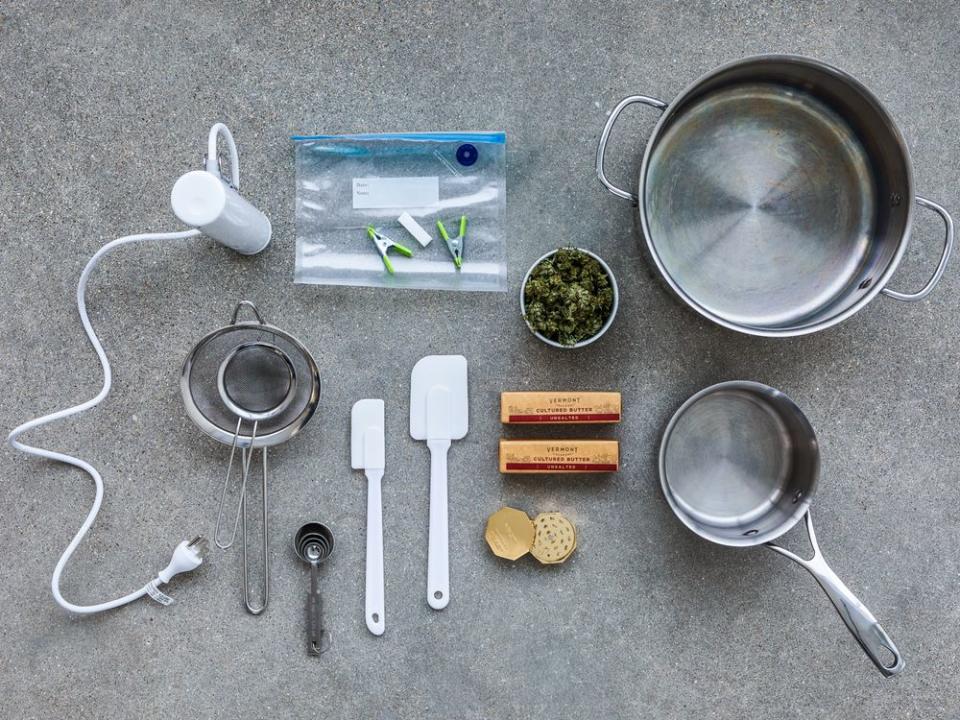
To get started, you’ll need:
3.5 grams cannabis flower (about ⅛ ounce)
3 tablespoons distilled water
1 vacuum-sealable bag (a sturdy resealable 1-quart plastic bag will work in a pinch)
½ pound (2 sticks) unsalted butter, preferably organic and grass-fed
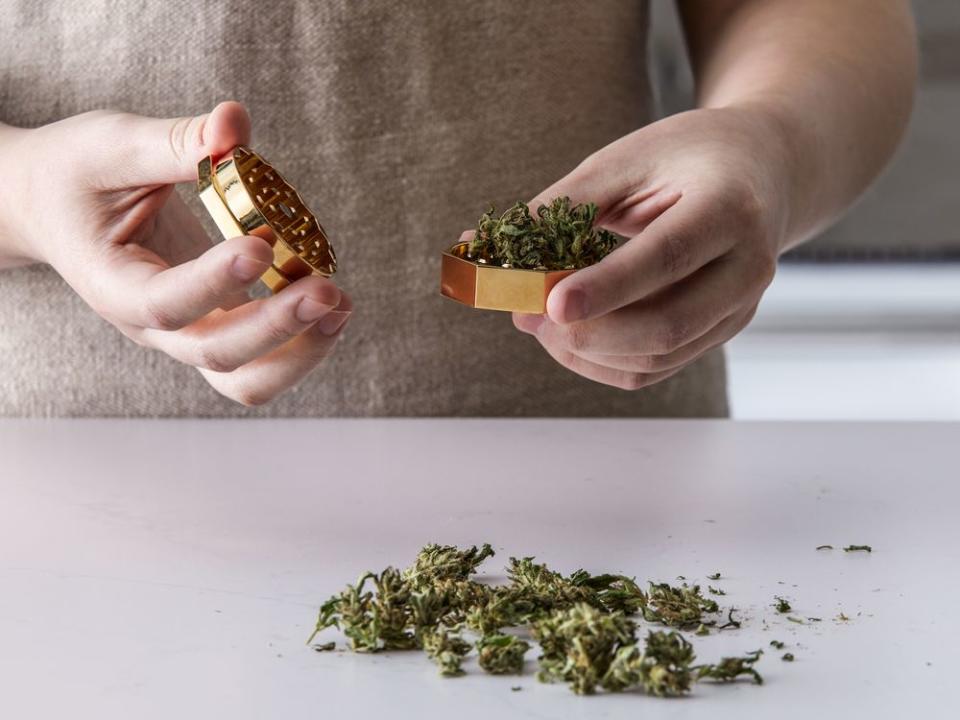
Step 1: Grind the cannabis
Set immersion circulator to 200F and place in a medium saucepan filled with tap water. Grind the cannabis buds into small pieces.
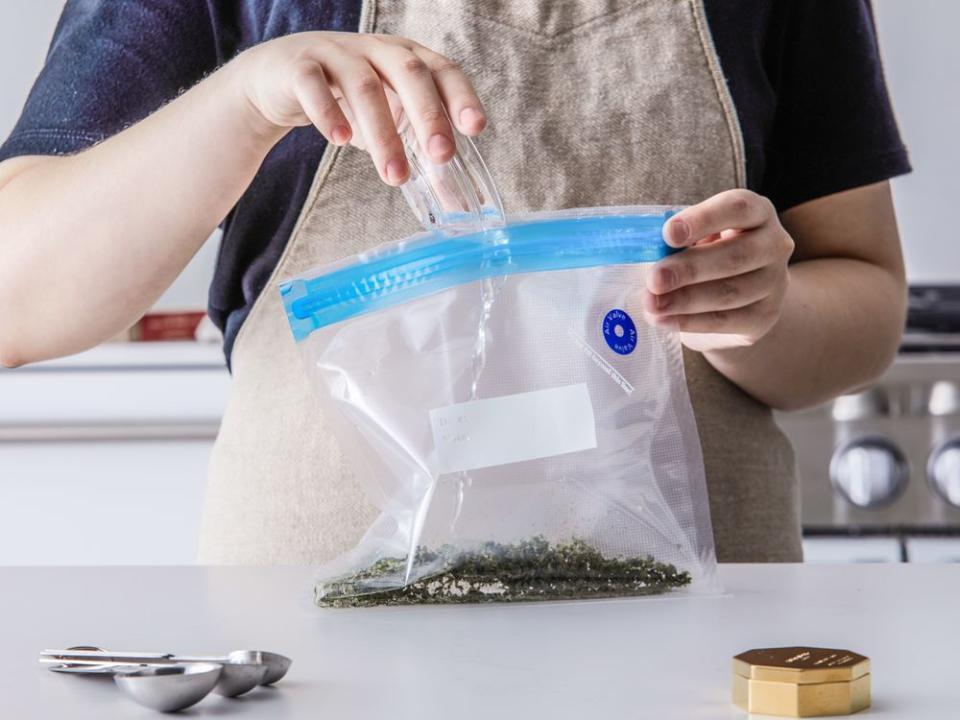
Step 2: Place in sous-vide bag
Pour the ground cannabis into a vacuum-sealable bag and add 3 tablespoons distilled water. Using the vacuum sealer, seal the bag completely.
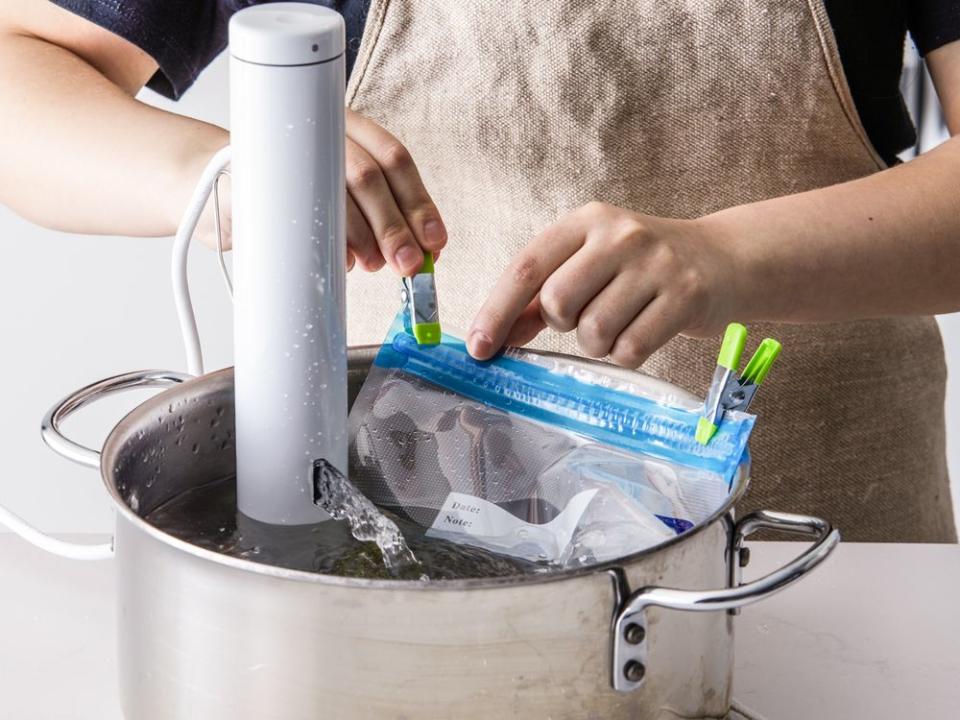
Step 3: Set up the sous-vide
When the circulator reaches 200F, drop the sealed bag into the water and decarb for 30 minutes, turning the bag every 5 to 10 minutes to ensure the cannabis is submerged in water.
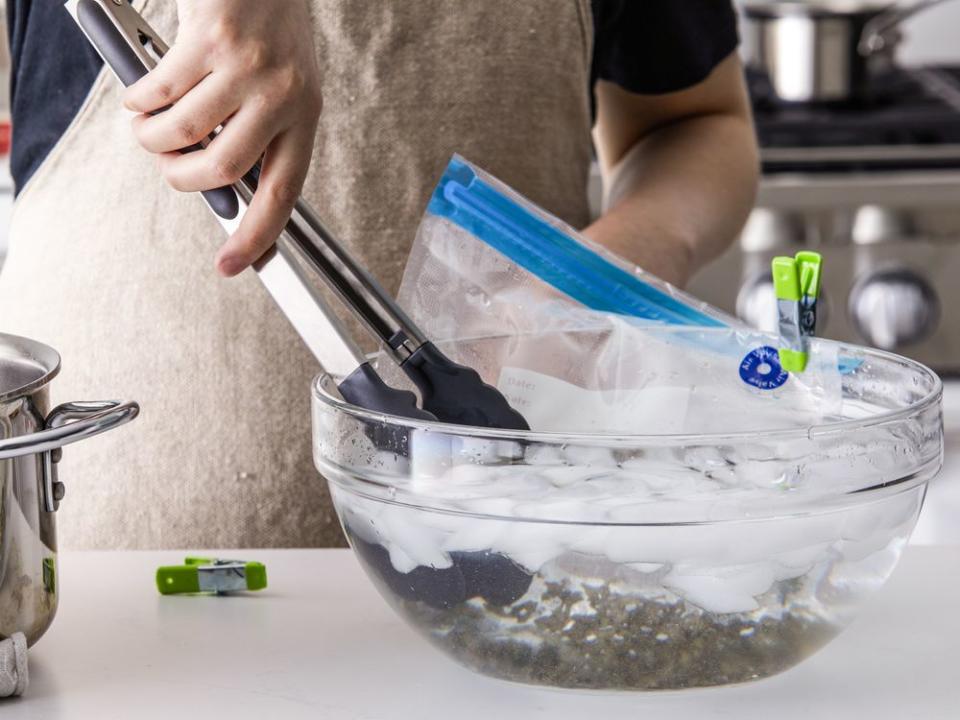
Step 4: Let cannabis cool
Transfer the bag to a bowl of ice water to stop the cooking and preserve the terpenes; let cool for 10 minutes.
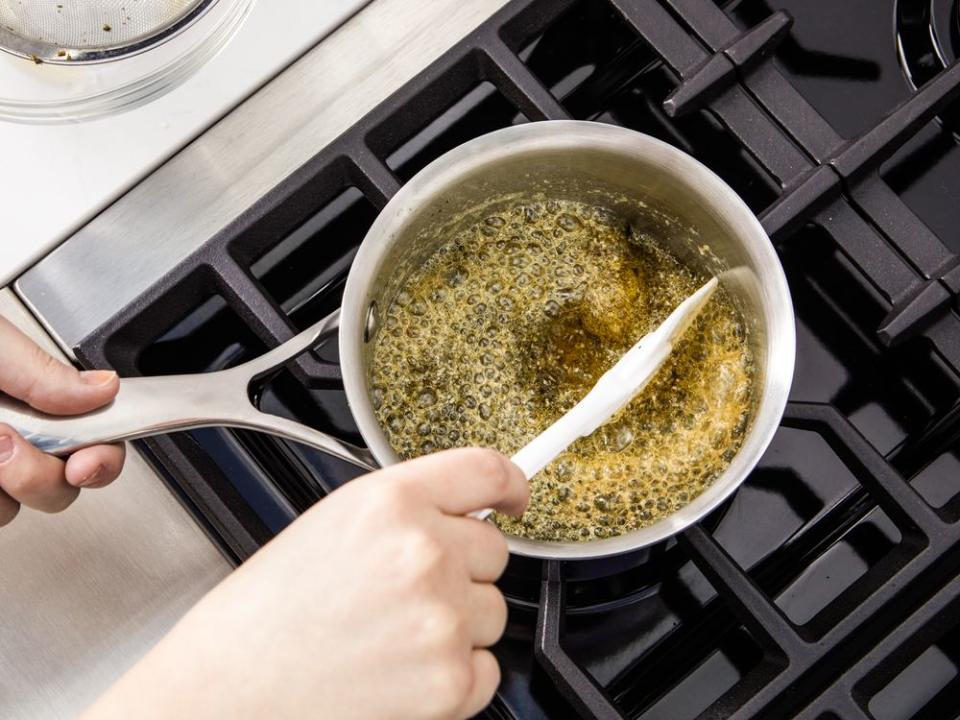
Step 5: Simmer cannabis in butter
Heat butter in a small saucepan, add cannabis and simmer for 20 minutes, stirring often. Remove the saucepan from the heat and let the butter mixture steep for another 30 minutes.
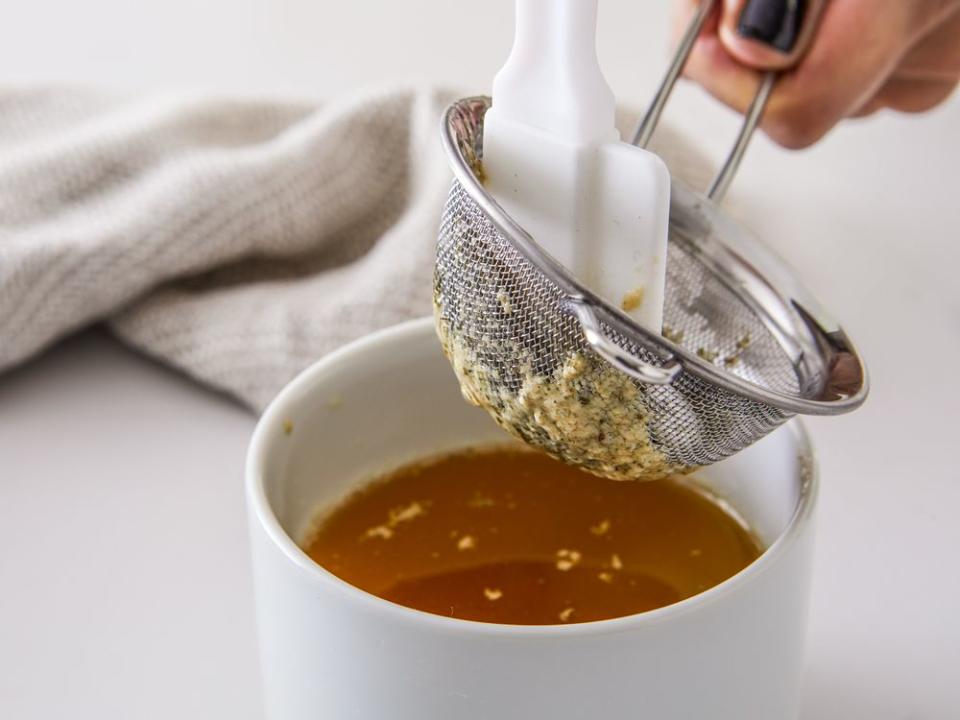
Step 6: Strain, store, and get cooking
Strain the mixture through a fine-mesh sieve into a shallow container with an airtight lid, pressing on the solids to extract all of the cannabutter. You’ll have 12 tablespoons (3/4 cup) of cannabutter, with about 43mg of THC per tablespoon based on a 20% THC strain.
Keep refrigerated and use it within 30 days to make:
Cannabis-Infused Jam-Stuffed French Toast
Cannabis-Infused Pasta with Clams and Green Chiles
Citrus-Caramel Blondies
Or anything else you dream up.
Kitchen Toke is the first media company dedicated to teaching people about culinary cannabis for health and wellness. The website and magazine cover cooking and entertaining seasonally with cannabis, along with chefs and other experts teaching how to use the plant as part of a regular health and wellness regimen.

